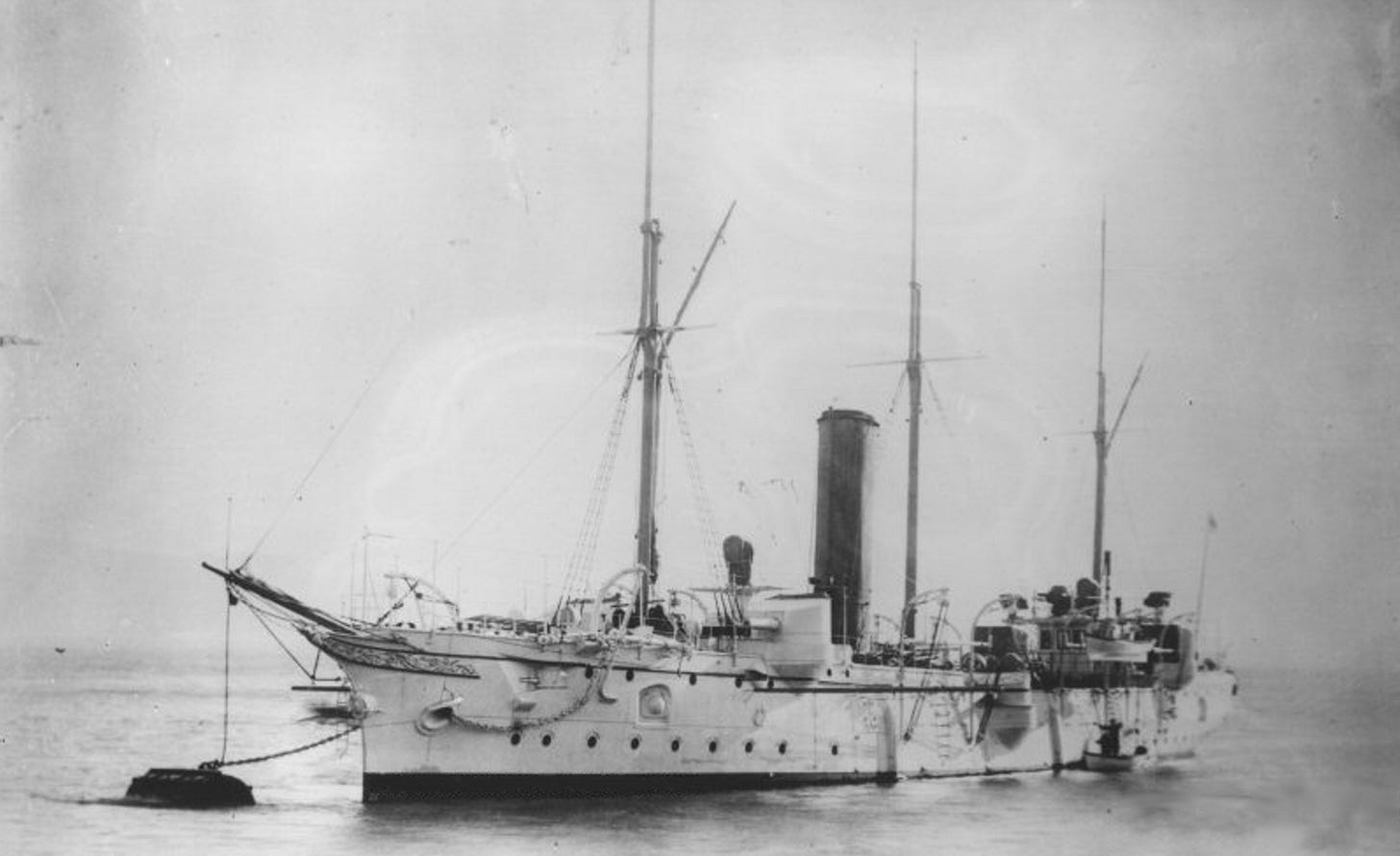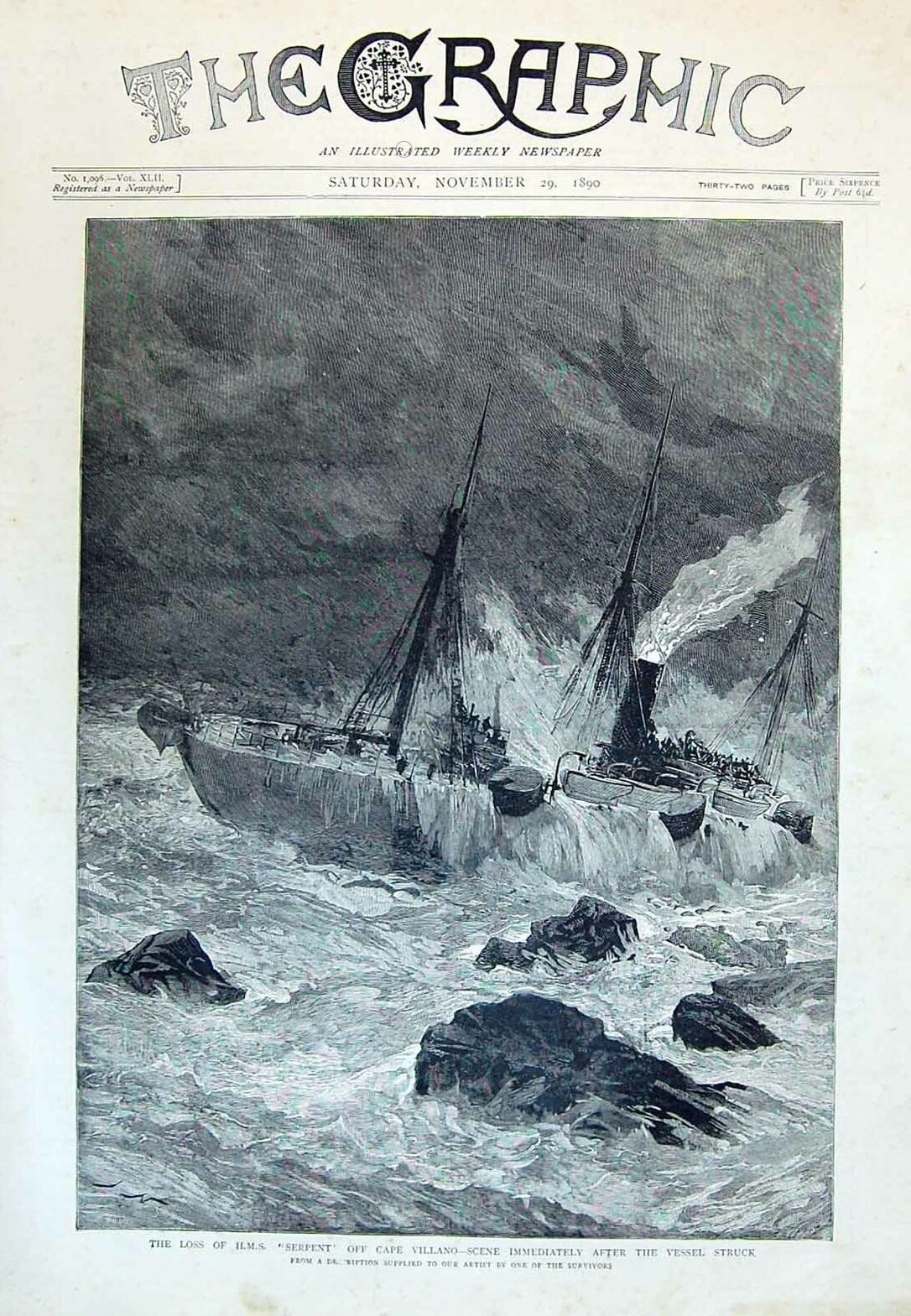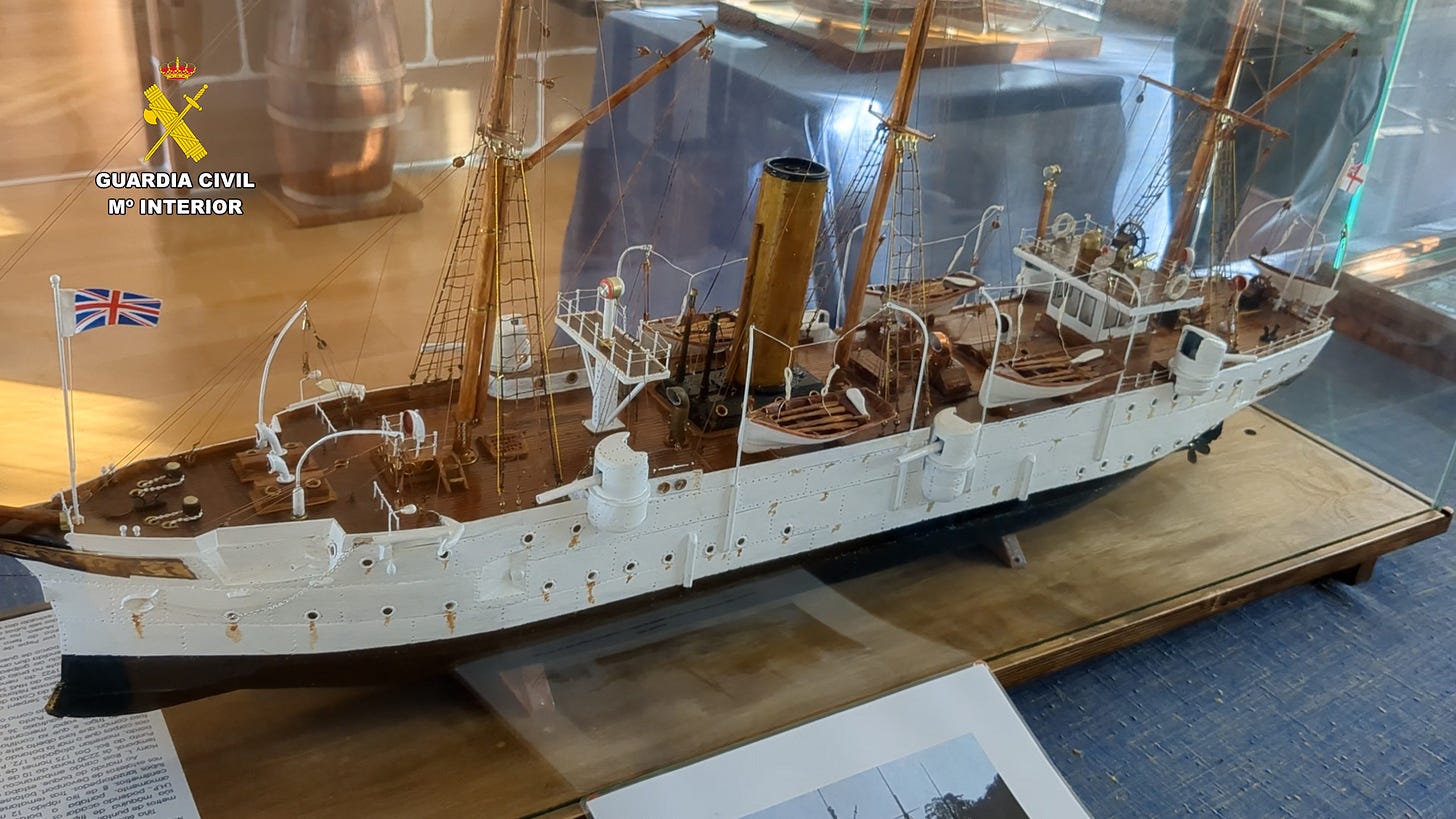Lost British warship’s anchor discovered after 134 years – being used as a garden ornament
HMS Serpent was lost in November 1890 with 172 souls, and her wreckage scattered, but her anchor survived
ONE of the last known traces of a British warship that sank off Spain with 172 souls has been found – being used as a garden ornament.
The HMS Serpent, a British torpedo cruiser, was lost in a storm off the treacherous Costa da Morte or “Coast of Death” in 1890.
Her wreckage was scattered and in the weeks that followed, the bodies of 142 crewmen washed up on the shore.
Now Spanish police have discovered a piece of her survives – decorating the facade of a house in Muxia.
A probe was launched in June after officers were tipped off that a local home had the Serpent’s anchor on display.
The Guardia Civil – one of Spain’s two national law enforcement agencies – described what happened in a statement.
It said: “According to the testimonies obtained, this anchor was extracted in the area of Cabo Vilán, in Camariñas, around 25 years ago, when a fishing boat caught the anchor in its nets.
“When trying to recover it, already close to the surface, the gear broke and the anchor returned to the bottom.
“So the boat's captain noted the coordinates, so that another vessel with a greater draft could pick it up the next day.
“The man under investigation later took the anchor and used it to decorate his home.”
Under local law in Galicia, north-west Spain, the remains of shipwrecks pre-dating 1901 are considered protected cultural heritage.
The law demands that any protected artifacts recovered without authorisation must be confiscated and made available to the relevant authorities.
The Spanish Federation of Underwater Activities determined that the anchor was of the “admiralty” type, common among Royal Navy ships in the 1800s.
RELATED ARTICLES
Fit for a drunken sailor! Shipwreck found off Norway 300 years after sinking was blamed on 'inebriated' Irish crew
Action on 'Doomsday wreck' urged NOW as experts warn bombs WILL escape collapsing ship
British WW1 wreck torpedoed five years to the day after Titanic disaster is found 107 years later
As well as the anchor of the Serpent, officers located two other anchors, whose origins are being probed.
The man is now being investigated for an alleged crime against historical heritage.
The anchors have been transferred to the Museum of Man, in Camelle, where they will be preserved.

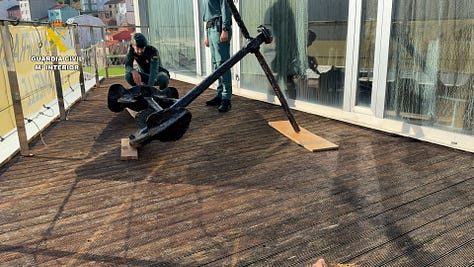

O Faro, a Galicia blog, describes the loss of the Serpent.
It says that the ship, a third-class torpedo cruiser, had departed Portsmouth two days earlier, bound for west Africa with a cargo of cannons and torpedo launchers.
Captain Harry Leith Ross ordered the ship’s watch, Gould and Burton, to look for the signal from from the lighthouse at Cabo Vilán.
But in the heavy fog, the men saw nothing and didn’t hear the waves crashing violently against the nearby reef, called Punta do Boi.
Then there was a loud bang and the Plymouth-built ship ran aground.
Captain Ross ordered the ship be reversed, but it was futile, and the sea pounded the Serpent into the rocks.
The lifeboats were released, but immediately obliterated by the waves.
When the waves finally released Serpent from the reef, she broke in two and sank.
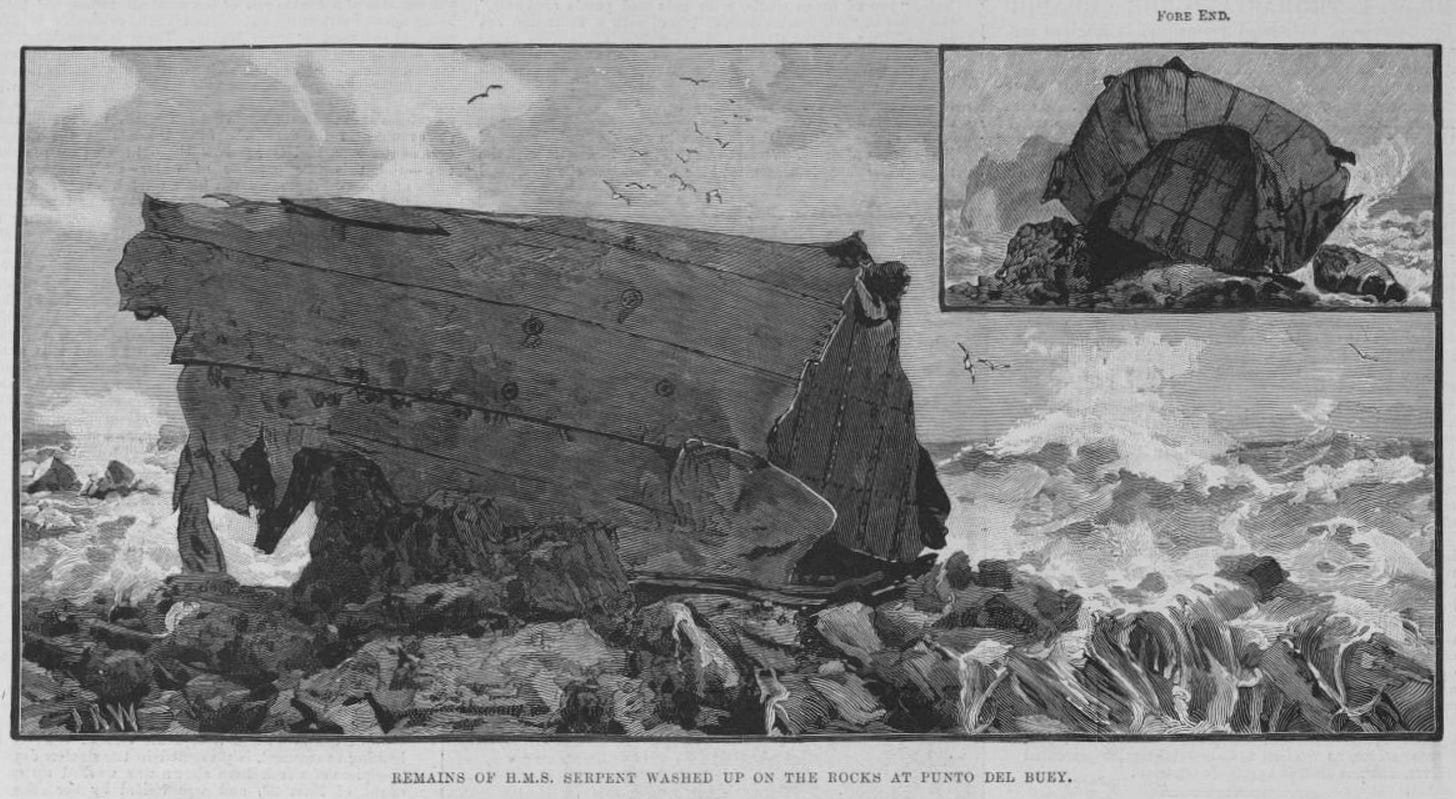
Both Gould and Burton survived, along with fellow crew member Luxon – all three of them had worn life jackets.
But there had been just 25 life jackets available for the crew of 175, and the navy learned its lesson, mandating that all its ships henceforth carry enough life jackets for the whole crew.
The three men identified the bodies of 142 crew mates that washed up over the following 45 days, but no trace of the others was ever found.
The bodies were buried in what is now called the Cementerio de los Inglés, or English Cemetery.
In its statement the Guardia Civil emphasised the importance of heritage protection.
It said: “We remind the public of the importance of respecting and protecting historical and cultural heritage, and call on citizens to report any suspicious activity that may endanger this legacy.”






